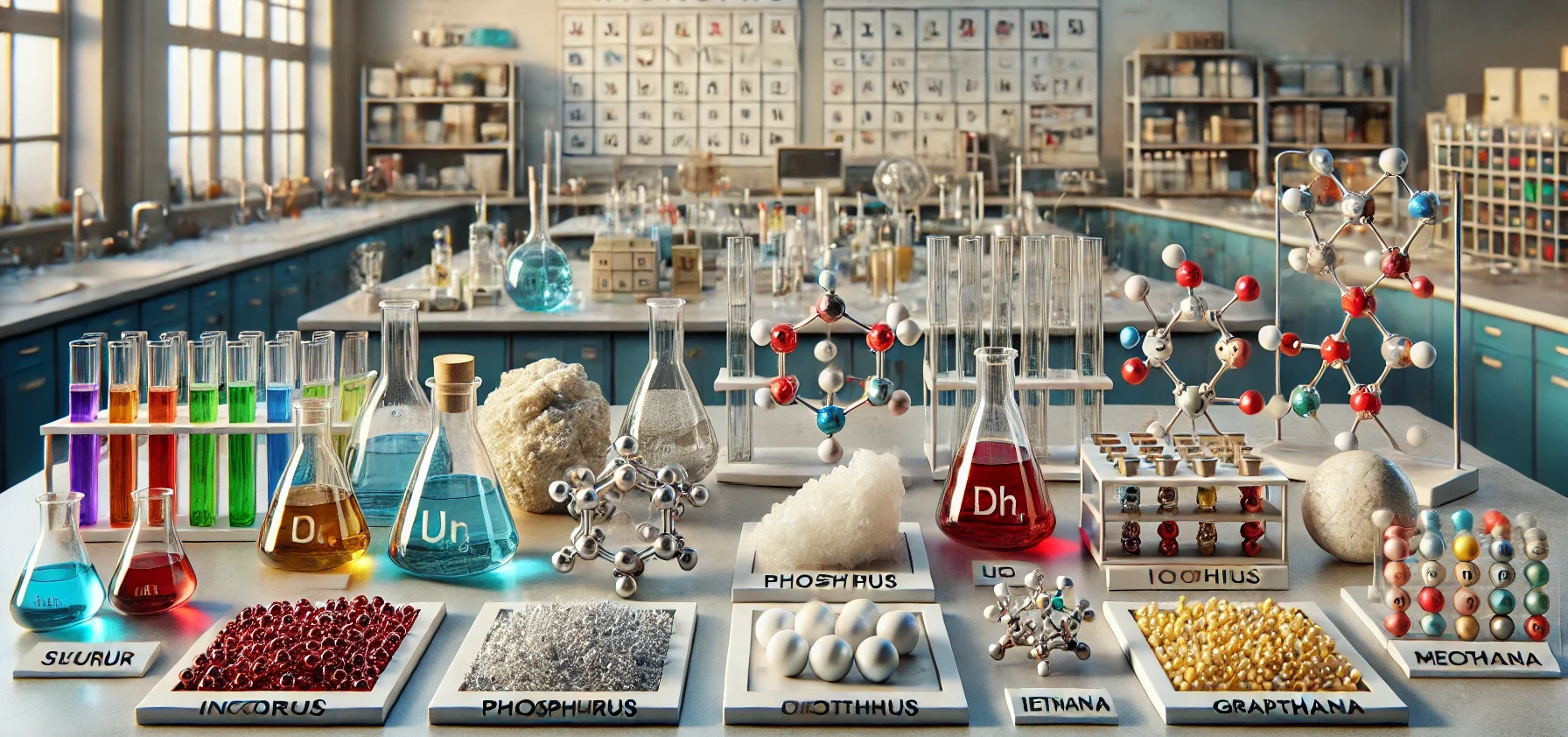Organic and inorganic nonmetals refer to nonmetal elements found in carbon-based compounds (organic) and those not involving carbon-hydrogen bonds (inorganic).
Inorganic Nonmetals
- Inorganic nonmetals are elements or compounds that do not contain carbon-hydrogen (C-H) bonds.
- They are generally derived from minerals and other non-organic sources.
-
Examples of Inorganic Nonmetals:
-
Silicon:
- Used in semiconductors, glass, and ceramics.
-
Sulfur:
- Used in the production of sulfuric acid, fertilizers, and in vulcanization of rubber.
-
Chlorine:
- Used in water purification, disinfectants, and the production of PVC (polyvinyl chloride).
-
-
Properties:
- Varied Physical States: Can be gases (e.g., chlorine), liquids (e.g., bromine), or solids (e.g., sulfur).
- High Melting and Boiling Points: Generally, have high melting and boiling points compared to organic compounds.
- Electrical Insulation: Most inorganic nonmetals are poor conductors of electricity.
-
Applications:
- Electronics: Silicon wafers in semiconductors.
- Chemical Industry: Production of acids, bases, and other chemicals.
- Construction: Glass and ceramics.
-
Organic Nonmetals
- Organic nonmetals are compounds primarily made of carbon atoms bonded with hydrogen, oxygen, nitrogen, and other elements.
- These compounds are derived from living organisms or synthetic processes.
-
Examples of Organic Nonmetals:
-
Plastics (e.g., Polyethylene, PVC):
- Used in packaging, pipes, and containers.
-
Polymers (e.g., Nylon, Teflon):
- Used in textiles, non-stick coatings, and engineering components.
-
Natural Organics (e.g., Cellulose, Rubber):
- Used in paper, clothing, and tires.
-
Properties:
- Low Melting and Boiling Points: Generally, have lower melting and boiling points compared to inorganic compounds.
- Combustible: Many organic compounds are flammable.
- Versatile: Can form a wide variety of complex structures with diverse properties.
-
Applications:
- Packaging: Plastics and films for protecting goods.
- Textiles: Synthetic fibers for clothing and industrial fabrics.
- Medical: Pharmaceuticals, biodegradable plastics, and medical devices
Click Here to Watch the Best Pharma Videos

